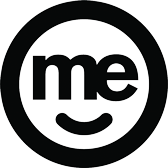ME is an Australian direct bank with a mission to help Australians get ahead financially. Owned by 26 industry super funds, the 1,600-employee business is headquartered in Melbourne and engages with its customers online, by telephone, and through mobile bankers, brokers, and industry super-fund and union networks.
“Our typical customer is any Australian who needs banking, but who doesn’t want a traditional bank,” says Melanie Simpson, group executive, People Experience. “They would have tried other banks and been disappointed. They believe Australians deserve a better bank—one that recognises their needs and, more importantly, prioritises helping them get ahead. Our retail banking products include savings and term deposit accounts, transaction accounts, variable and fixed-rate mortgage loans, personal loans and credit cards. And these meet the needs of 85% of Australians.”
Keeping up with growth.
As a challenger brand—and a relatively new bank, having received its banking license in 2001—ME has seen fast growth. The business made a profit of AUD$96.5 million in FY2018.
But according to Simpson, “A business cannot grow without more sophisticated HR systems to allow it to manage resources quickly, efficiently and with accurate information.”
Within ME, HR is split into four key areas:
- Business partnering: research strategic partners for the business that can also offer advice on employee relations and industrial relations
- Culture and capability: recruitment, organisational development, learning and development
- People experience solutions: HR administration and advisory, system support and process improvement
- Specialist team: payroll, remuneration and benefits, risk and occupational health and safety
“Before Workday, we didn’t have an HR management system. We were running off of spreadsheets and we had multiple systems for all sorts of things, making everything cumbersome and time-consuming,” Simpson says.
“For example, it took a lot of time to even understand resource allocation and plan organisational restructures to improve work efficiency. We also had very limited resource planning capability within projects.
“We didn’t have one single overarching system to record, organise and analyse every bit of HR information. Everything was manual. It was labour-intensive for HR, and did not provide any insights for our management. That was why we sought to build a new HR system,” she says.
The time of change.
That was ME in July 2016, and today the bank operates with a Workday solution.
“We did thorough market research that comprised a detailed request-for-proposal process. We invited a number of providers to participate in a two-day proof-of-concept to showcase the merits of their respective solutions,” Simpson says. “Workday was the best match for us. Being cloud-based, it’s always up to date. It also uses best-practice processes, which is important for risk mitigation.
“Further, there is a strong security environment within the Workday platform—an essential aspect for us as a bank. And we liked the integration of the modules into the package. The functionality was comprehensive and met our needs, and the user interface is nice,” she says.
But what really made Workday stand out in the end for ME was the speed of deployment. “Workday promised it would be quick, and it was. We started to build a new HR system in July 2016 and completed it by March 2017. It only took nine months,” Simpson says.
ME deployed Workday Human Capital Management (HCM), Workday Time Tracking, and the Workday Cloud Platform in two phases. First in HR, followed by a gradual inclusion of employees to help them understand their timesheets.
“Everyone had been looking forward to the change,” Simpson says. “The transition was generally smooth, but we did have a few bumps along the way. In retrospect, we could have prepared the business better for the changes by having a better support model to stabilise and embed the system once it was installed.”
Simpson also gives the following advice from ME’s experience for a smooth rollout of any application:
- Adequately resource the project team—don’t be too lean or the results will suffer
- Keep the project team together—even after the application goes live—to help resolve any issues
- Have a Help line for staff to call in the event of issues
- Resource post-deployment support positions properly
- Make use of a Values Realisation Assessment to measure benefits after the application has gone live
- Thorough testing regime
On the road to success.
With Workday in place, ME now has a single system for HR and a central record of the entire staff. The bank can now better understand resourcing in terms of numbers and breakdown of staff categories, resource availability and future demand, how to analyse data, and how to make decisions with the resource planning feature.
“The relationship with Workday as our integration partner was collaborative, with clear roles and responsibilities defined from the start. It has compared very well with other vendor relationships we’ve experienced,” says Simpson.
“The labour and time required to do tasks has been reduced dramatically, and we are currently adopting more functionality within the system,” she continues. “It’s still a work in progress. I think we still have some way to go to capitalise on its full potential.
“With more sophisticated systems in place, we are able to better manage our fast-growing bank. We aspire to continue to grow in relevance and sophistication, and to be increasingly innovative in the way we service our customers, who we put first.

